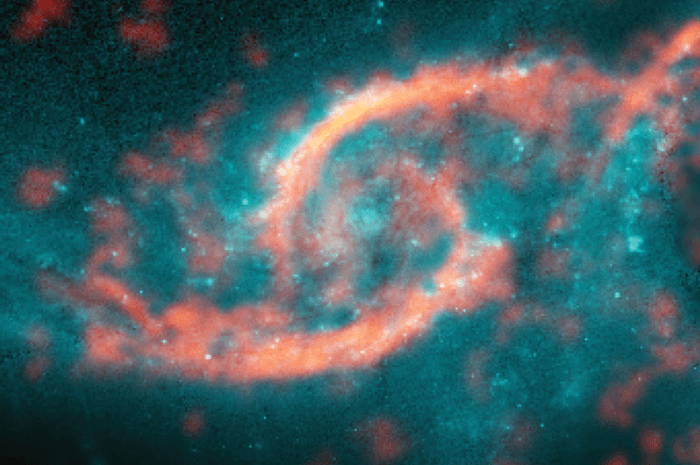
Situated far above sea level in the Atacama Desert in Chile, the Atacama Large Millimeter Array (ALMA) telescope is used to study the heavens. Using it, astronomers have discovered two spiral galaxies that have crashed together (IC 2163 and NGC 2207), producing a “tsunami” of stars and gas (1). The result closely resembles a gigantic eye (see Figure 1).
“Although galaxy collisions of this type are not uncommon, only a few galaxies with eye-like structures are known to exist,” explains the study’s lead author, Michele Kaufman. “Galactic eyelids last only a few tens of millions of years, which is incredibly brief in the lifespan of a galaxy. Finding one in such a newly formed state gives us an exceptional opportunity to study what happens when one galaxy grazes another,” she adds. The eyelids are roughly one kiloparsec (3262 light-years) wide, and can be found 114 million light-years away from earth, in the direction of the constellation Canis Major.
References
- M Kaufman et al., “Ocular shock front in the colliding galaxy IC 2163”, Astrophys J, 831, 161 (2016).
